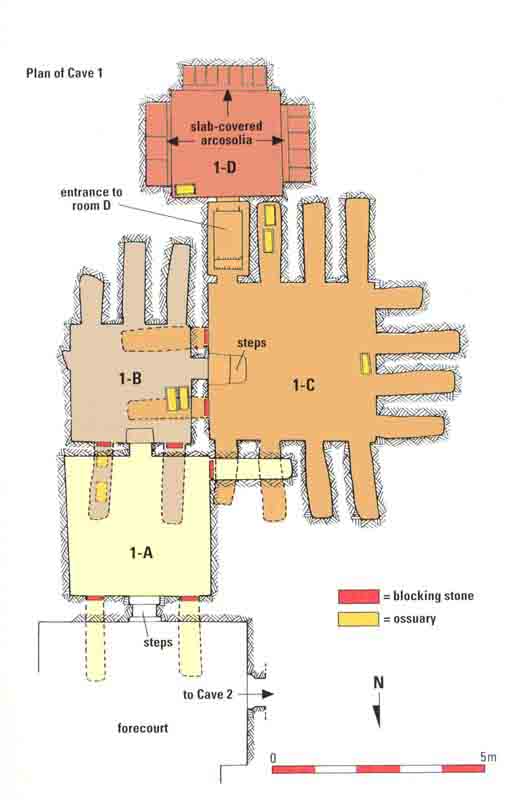Image Details

Sharing a forecourt with Cave 2, Cave 1 was carefully hewn out of the Jerusalem limestone. Three steps descend into room 1-A (lower left), where the floor was littered with burial objects and bones from all three periods of the cave’s use. This room leads to chambers B, C and D. From room B several stone steps drop into room C, containing 14 loculi, one of which was widened to form a passageway to room D. Each of the three walls in room D contains an arcosolium—a wide arched burial niche where the deceased was placed parallel to the wall—with a deep coffinlike trench covered by stone slabs adjoined with plaster. Apparently the grave goods and bones in rooms B, C and D were moved to chamber A to make way for fresh burials during the Roman and Byzantine periods. The accumulation in room A included gold earrings from the Late Roman period and the remains of wooden coffins from the Byzantine period. On the floor of room B were scattered fine glass candletick-shaped bottles from the Late Roman period.
